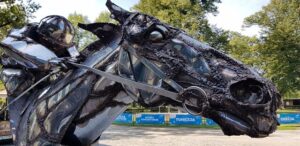 One club players are rare in the modern game, and Jamie Carragher could wind up being among the last ever. The Liverpool-born player, an Evertonian as a child, went on to represent fierce rivals Liverpool for the duration of his professional career. With over 700 games for the Reds and 38 caps for his country, Carragher played from 1996 until 2013, covering everything from the full-back position to playing full-time as a central defender. With a never-say-die attitude and a tactical brain that far outweighed his physicality, Carragher was a key part of the Liverpool side of the Gerard Houllier and Rafael Benitez era.
One club players are rare in the modern game, and Jamie Carragher could wind up being among the last ever. The Liverpool-born player, an Evertonian as a child, went on to represent fierce rivals Liverpool for the duration of his professional career. With over 700 games for the Reds and 38 caps for his country, Carragher played from 1996 until 2013, covering everything from the full-back position to playing full-time as a central defender. With a never-say-die attitude and a tactical brain that far outweighed his physicality, Carragher was a key part of the Liverpool side of the Gerard Houllier and Rafael Benitez era.
What made Jamie Carragher so special?
Carragher was a born leader, a player who made the absolute most of every screed of talent he had. Never the best defender in terms of physique, pace, or technique, Carragher got by with reading of the game and a desire to never shirk a challenge.
Throughout a career where Carragher played various positions, his development into a smaller-than-usual central defender ensured that the England man would become a key player. Under Benitez, he was moulded into one of the best defenders in the Premier League, becoming a key part of Liverpool teams who fought for honours.
His legendary performance in Istanbul, when he played through injury to win the 2005 UEFA Champions League, will go down in Liverpool folklore.
What does Jamie Carragher do now?
Having shirked the coaching game, Carragher is a popular pundit on Sky Sports, acting as co-anchor to Gary Neville on their flagship Monday Night Football show. Carragher has become a regular commentator, too, often doing games for Sky and for other platforms.
His insight into the game as well as his passionate personality makes Carragher an absorbing pundit to listen to throughout the duration of any match.

